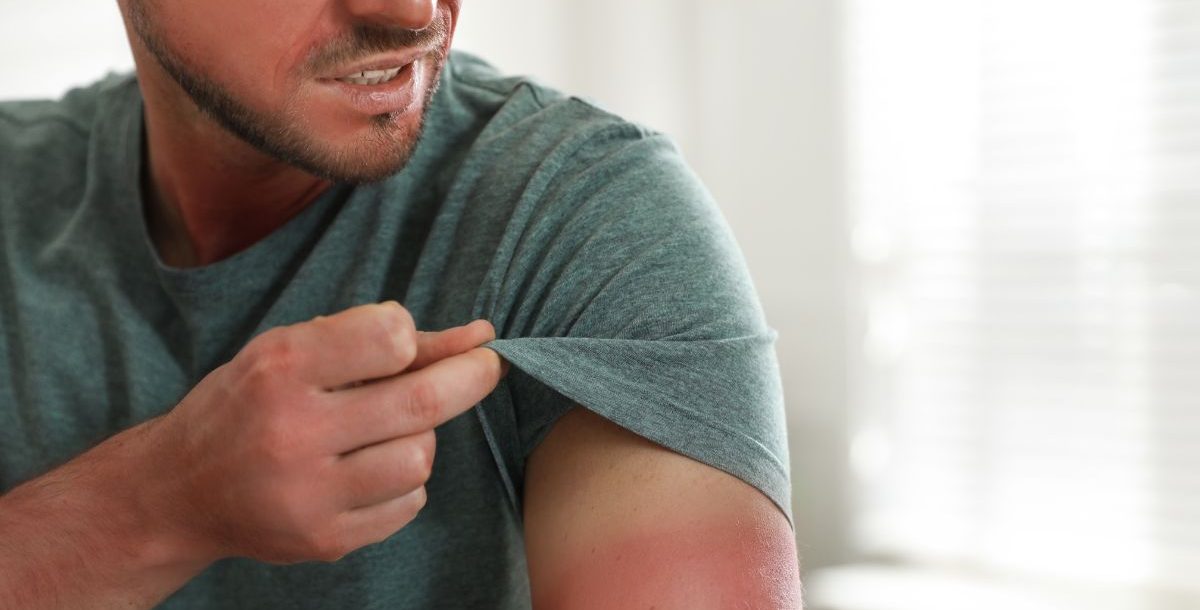Guys, this one’s a question for you: If Superman could protect himself from Kryptonite, would he? The truth is, he would, and so should you. But what is your Kryptonite? It might be the risks associated with exposure to ultraviolet (UV) rays from the sun, and why the effect of skin cancer in men may come down to their biology.
One of the most common skin cancers for men under age 50 is melanoma, which is the most dangerous type of skin cancer – a Kryptonite, if you will. In fact, skin cancer is more likely to be fatal for men than women, according to the American Academy of Dermatology. Men are also more likely to develop and die from melanoma than women.
So, what explains this strange pattern? And how can you prevent it?
Why some skin cancer in men is more common
It’s unclear why men are more likely to contract melanoma than women, but there are theories that researchers are using to explain this discrepancy. A major one of those has more to do with the structure of men’s skin itself. Men have thicker skin with less body fat underneath than women, as well as more collagen and elastin than women.
It’s those differences that some studies identify as the reason that skin cancer in men is more damaging – simply put, men’s skin is more likely to be damaged by the sun’s UV rays, and it reacts more intensely to those rays than women’s skin.
Time spent in the sun
Men typically spend more time in the sun throughout their lives than women, which can increase the risk of developing melanoma. This could be time spent doing tasks like yard work or outdoor activities like golfing, fishing or spectating at sporting events. Even time cooking at the grill can increase your sun exposure.
Sun protection
According to a study from the Journal of the American Academy of Dermatology, women are more likely than men to wear sunscreen, so higher melanoma rates among men may also be due in part to lower rates of sun protection. Something as simple as applying a daily sunscreen on days when outside activities are on the agenda can significantly reduce the risk of developing melanoma.
A good offense is your best defense
Depending on the type and how far it’s progressed, skin cancer in men can be treated successfully in many cases. However, the truth is that it’s far better to prevent it in the first place. Here are some simple steps to reduce your risk of skin cancer.
Wear sunscreen
Men tend to be less likely than women to use sunscreen for multiple reasons. One is that men generally say they don’t like the feel of lotion on their skin. Another is that the makeup, moisturizers and other skincare products women often use have sunscreen in them, so they get sun protection by default.
But applying sunscreen is a habit that can be learned. Be sure to use one with a sun protection factor (SPF) of 30 or higher. Sunscreens with zinc oxide or titanium dioxide are ideal, as they provide broad-spectrum protection.
Wear protective clothing
Wearing long-sleeve shirts and pants instead of shorts helps protect you from the sun’s rays. And for men — especially those with thinning hair — wearing a hat is important to protect the scalp, where many cancers develop. While baseball caps are helpful, a hat with a wide brim that shades the ears and neck is better.
Look at your skin regularly
Before or after showering is a great time to check for skin issues. And doing that frequently makes it easier to spot an area that’s changing, which can be a sign of skin cancer. Look for moles, bumps or spots that are growing, irregularly shaped, multicolored or prone to bleeding.
And while it’s not the way we often think of the phrase, “watch your back!” is good skin cancer prevention advice. If possible, have a friend or family member check you periodically for anything concerning. You can also look at your back in your bathroom mirror using a hand mirror.
Get regular skin exams from your health care provider
Everyone should get a head-to-toe skin check from their doctor regularly. Men who have a family history of melanoma, have had blistering sunburns in the past or tan regularly should see a dermatologist every year for a thorough skin cancer screening.
When to follow up with your health care provider
If Superman could shield himself against Kryptonite, he would. And while skin cancer is one of the most common health issues in men. you can easily protect yourself against its risk factors. If you don’t have a dermatologist, you can talk with your primary care provider first and get a recommendation for one.
Get outside, be active and have a great time, but make sure always use sunscreen to avoid the Kryptonite.
Learn more about skin cancer as well as the cancer care services we provide at Bon Secours.





